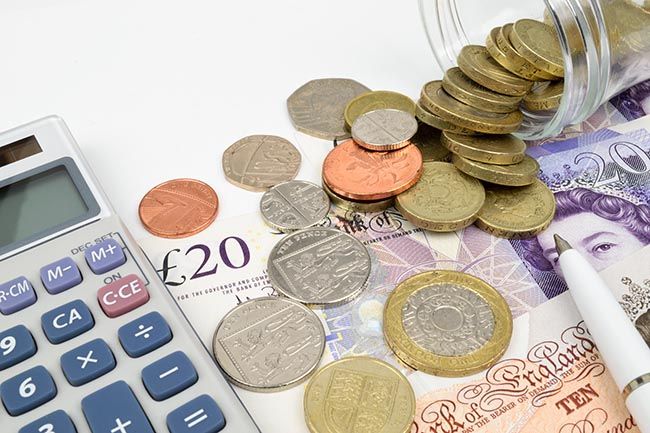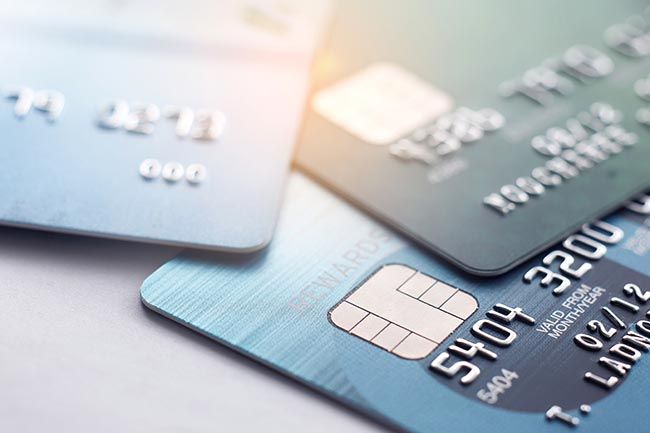Is a loan cheaper than a credit card?
There is no one straightforward answer to this question. It depends on the amount of money you need; how long you choose to borrow it for; what you need it for; the rate of interest you’re offered; and how you manage your borrowing.
Interest is charged differently on short-term loans and credit cards. With a credit card, interest mounts up on your outstanding balance each month, but you can avoid it altogether if you repay your balance in full and on time each month. In this instance, a credit card could work out cheaper than a loan – but you’ll need to be disciplined with your repayments. Remember, you should never spend more money than you need or can afford to repay.
Further down the page, we’ll take a look at interest-free credit cards.
Short-term loans vs payday loans
A payday loan, as the name suggests, is designed to help borrowers between one payday and the next. They must generally be repaid in full within a month.
A short-term loan provides borrowers with the opportunity to spread the cost of the loan across a choice of terms. For example, the lenders on the CashLady panel offer short-term loans with repayment terms of 3 to 60 months, depending on the amount of money you apply to borrow.
The shorter the term, the less interest you’ll pay, although you’ll also have less time to pay back the money you owe, and your monthly repayments will be higher.

What are the rules on short-term borrowing?
In January 2015, new guidelines on short-term borrowing were introduced by the Financial Conduct Authority (FCA).
Guidelines state that default fees must not exceed £15. The interest and fee(s) charged on a loan mustn’t be more than 0.8% per day of the amount borrowed. Customers also cannot be asked to pay more in fees and interest than 100% of the amount of money they borrowed.
What’s a cash advance?
A cash advance is when you use your credit card to withdraw money from a cash machine.
Where possible, using a cash advance as a way to get hold of funds should be avoided, as lenders are likely to view this as poor money management. This could have a negative impact on your credit score and your chances of being approved for credit in the future, should you need to apply.
In addition to this, your credit card provider is likely to also charge a fee for a cash advance. This is usually between 3% and 5% of the money withdrawn and there may be a minimum fee.
What are the cheapest payday loans?
The cheapest payday loans online are usually the ones that come with the lowest annual percentage rate (APR).
The APR refers to the overall annual cost of the loan. The lower the APR, the lower the overall cost of borrowing.
Your personal APR will be decided by a range of factors, such as your credit score.
CashLady has put together a guide to help you compare payday loans. A payday loan comparison could help you gain a better understanding of the products you’re looking for, and the things to bear in mind before you make a decision.
Credit cards vs loans: fees
Before you make an application for either a credit card or a payday or short-term loan, it’s important to understand if there are any fees associated with the product. As discussed, standard fee(s) (if applicable) will be included within the APR; however, if additional fees, such as late repayment fees, will be charged separately.
Fees will increase the cost of borrowing.
Is there any way to avoid paying interest?
Personal loans should not be confused with interest-free credit options when covering the cost of a specific purchase. For example, if you were to buy a new kitchen, the company may offer an interest-free repayment plan over a set amount of time.
If you have a credit card and you clear your balance on time and in full each month, you won’t be charged interest.
Some credit cards, such as balance transfer credit cards and purchase credit cards, may come with an initial promotional offer of either no interest or a low rate of interest for a set amount of time.
Please be aware that if you default on your repayments, you might lose access to the promotional offer; and that any borrowing that isn’t cleared by the time the offer ends will accrue interest at your standard rate.
What’s the cheapest way to borrow money?
In summary, there is no one set answer to this question; everyone’s financial situations are unique to them.
- If you feel that a credit card could be a suitable option for you, you may wish to look for a provider that offers interest-free borrowing for a set period of time. Some credit card providers may charge a standard account fee, so you’ll need to weigh up whether the money saved on interest will be worth the fee. To make the most of your interest-free credit card, be sure to repay the balance in full before the promotional period ends and you won’t be charged any interest.
- When searching for a suitable loan, remember that the lower the APR, the less the cost of borrowing. Those with good credit scores could be offered a more desirable interest rate. You can work towards a healthier credit position by registering to vote; paying all bills and any current credit commitments on time; checking your credit report for errors; and keeping your credit applications to a minimum.
- Could friends or family help you out? They may be willing to lend you money at a lower interest rate than one typically offered by a high street lender - they might even agree to allow you to borrow the money interest-free. Before you take a loved one up on their offer, it’s essential to put a repayment plan in place. It can be easy to become complacent when repaying someone we’re familiar with, but it’s extremely important to stick to the agreed repayment plan to avoid risking damage to your relationship.
- Alternatively, if your need for money can wait and you want to avoid paying interest altogether, you could save up the money instead. Of course, this will take longer, but it will save you having to apply for credit.

Do loans and credit cards affect your credit score?
Yes, your credit score will be affected by either a loan or a credit card.
If you keep on top of your monthly repayments and clear the balance of the loan on time, you might see an increase in your credit score.
Likewise, making at least the minimum repayment amount due on your credit card each month; staying within your credit limit; and keeping your credit utilisation as low as possible could contribute to a rise in your credit score, as long as any other credit commitments have been handled in the same way.
Missing a repayment on either a credit card or loan will cause your credit score to decline.
Exceeding your credit card’s credit limit will also damage your score.
Search for a short-term loan with CashLady
CashLady is a credit broker working with a large panel of responsible lenders, all of whom are authorised and regulated by the FCA. CashLady could help you search for a short-term loan between £100 and £10,000.
I’m struggling to make my repayments; what can I do?
If you have either a loan or a credit card that you’re struggling to repay, you should contact your lender or provider as soon as you can. They will be keen to work with you to put a plan in place, which could help to ease some of the pressure.
We understand that money worries can feel really upsetting. Please know that whatever you’re facing, you don’t have to go through it alone. Free, impartial advice on money and debt management can be found on sites such as StepChange, MoneyHelper, Citizens Advice, and National Debtline.

